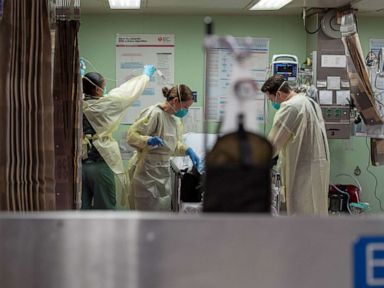
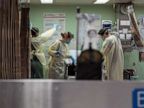

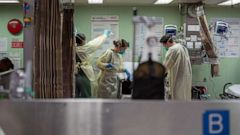
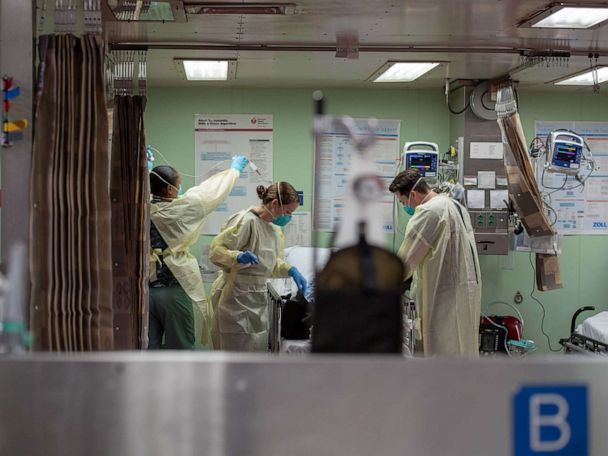
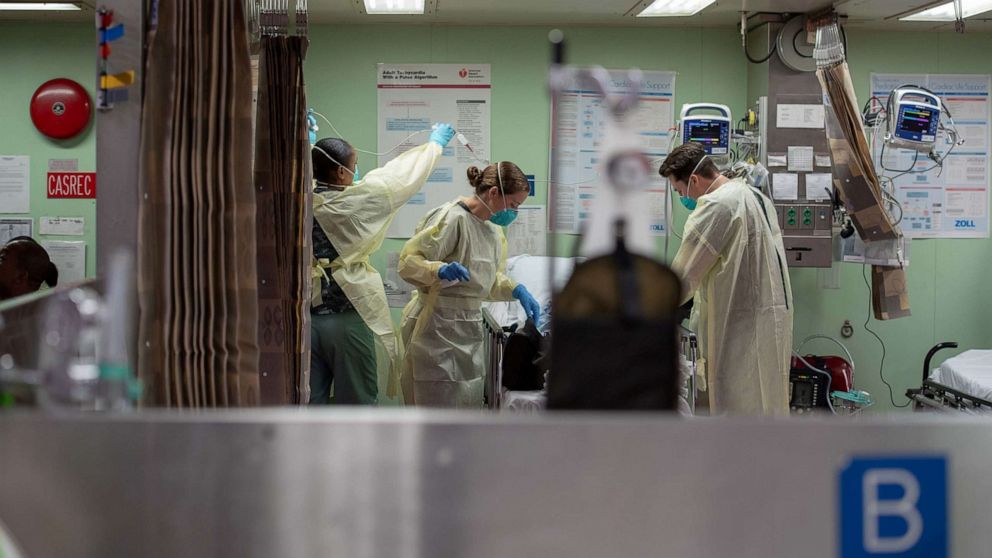
As health officials were confronted this week with the possibility that as many as one in four people who have the novel coronavirus may not show symptoms, researchers are investigating whether subtle hints from wearable wellness devices could help identify asymptomatic cases — a critical advantage in the race to trace the virus’s spread.
The gadgets — most commonly bracelets and rings — track users’ physiological metrics, from sleep cycles to heart rate, and report the data back to a corresponding smart phone app. While at present those metrics remain untested by independent researchers, Dr. John Brownstein told ABC News the data gathered by the devices could someday help unveil otherwise hidden cases.
“It makes sense that these vital sign-tracking wearables could be valuable in early detection of the disease,” said Brownstein, chief innovation officer at Boston Children’s Hospital and an ABC News contributor. “Slight changes in heart rate and temperature can provide early clues into illness ahead of when — or even if — symptoms actually manifest.”
As health care providers scramble to test and treat possible cases, at least two tech companies are suggesting they have data that could help, and researchers are beginning to evaluate how effective they could be.
In the meantime, there has been scant, but intriguing anecdotal evidence.
In Finland, a user of the smart ring made by Oura tested positive for COVID-19 earlier this month after waking up to find his “readiness score” – a daily aggregate of physiological data, such as sleep quality and resting heart rate – had plummeted.
“I felt tired a bit, I didn’t sleep well. But I didn’t feel sick at all,” Petri Hollmen, the CEO of a Finnish event planning startup, told ABC News. “When I woke up, I checked the app for how I should feel. My readiness score was 54 [out of 100], which is really low. I don’t usually have anything like that except maybe after a very hard night at the bar. That was a surprise.”
Hollmen used a thermometer to take his own temperature. It came back normal. Out of an abundance of caution, he said he called his doctor and went in for a test. Because he had no symptoms, Hollmen said he felt “guilty and even ashamed” for seeking help.
Within hours, though, his test came back positive. “I was like, ‘no way – strange,’” Hollmen recalled thinking.
A similar case recently emerged in New York City, the American epicenter of the disease. On March 11, Brian Eisenberg, a 37-year-old user of a smart bracelet called WHOOP, tested positive for the disease.
That morning he woke up with a fever, one of the most common symptoms associated with the virus. But a closer examination of WHOOP’s metrics in the days leading up to his diagnosis indicates coronavirus may have been present before the onset of his high temperature.
Days before his fever emerged, Eisenberg’s app registered a substantial drop in his “recovery score” – an aggregate metric similar to Oura’s “readiness score.” Four days prior to his diagnosis, Eisenberg’s “recovery score” was 95 out of 100. The next day it dropped to 51, then 44. On the day he tested positive, he said his score was 7.
The same trend afflicted his heart rate variability (HRV) – the amount of time between heart beats. Four days before his diagnosis he registered an HRV of 121 milliseconds (ms), then 74 ms the next day, and finally 37 ms on the day he tested positive.
“This sort of precipitous drop has only ever happened to me one time,” Eisenberg said, “and that’s unfortunately when I had COVID-19.”
Those anecdotes are now isolated incidents, and neither app is an approved medical device. But the app makers, researchers and scientists hope the wearable fitness apps could provide data with broader implications for early detection of infectious diseases like COVID-19.
“We believe that a noticeable increase in respiratory rate is a measurable precursor of COVID-19 symptoms based on individual cases that we have seen in our data,” said WHOOP CEO Will Ahmed. “WHOOP data may be able to help identify the coronavirus during the incubation period before someone feels sick.”
In that vein, both Oura and WHOOP have forged partnerships with medical researchers as part of an effort to validate their hypotheses.
On Wednesday, WHOOP announced a partnership with the Cleveland Clinic and Central Queensland University in Australia, where scientists will investigate the possible “connection between changes in respiratory rate and COVID-19 symptoms” based on data collected “from hundreds of self-identified COVID-19 cases among WHOOP members,” according to a press release.
Oura partnered with the University of California, San Francisco last month to “study whether physiological data collected by the Oura ring, combined with responses to daily symptom surveys, can predict illness symptoms,” the company said.
As part of the study, more than 2,000 UCSF health care workers who are “in daily contact with patients who may be afflicted with COVID-19” will wear the Oura ring, the company said. No results have been announced yet.
Brownstein said that drawing any conclusions about the device’s scientific viability before a closer examination is premature. But if the data checks out, public health officials could use that information to plot next steps in fighting the illness.
“When aggregated,” Brownstein said, “these tools could provide early windows into disease hot-spots that can ultimately inform decision-making by public health officials.”

